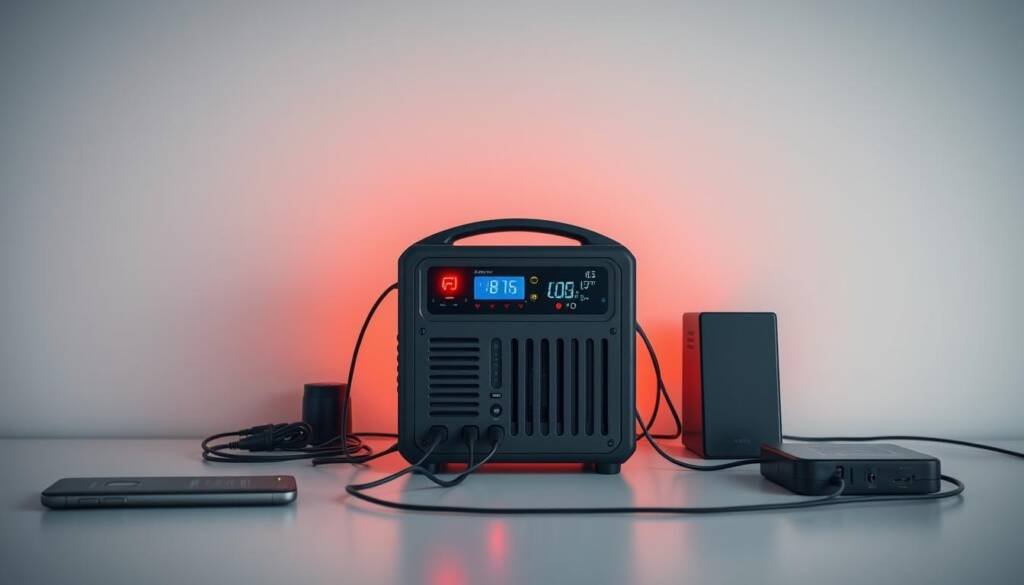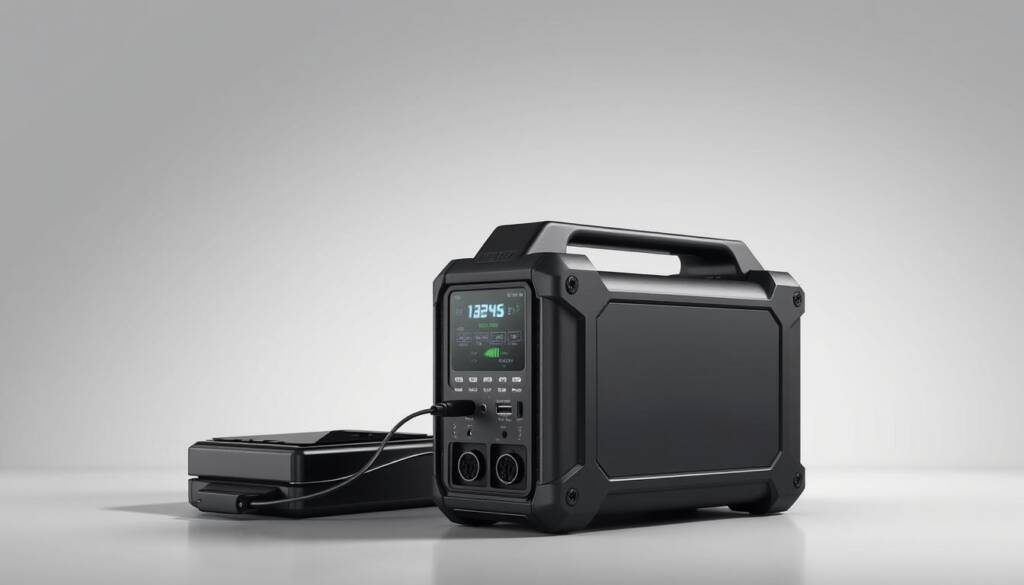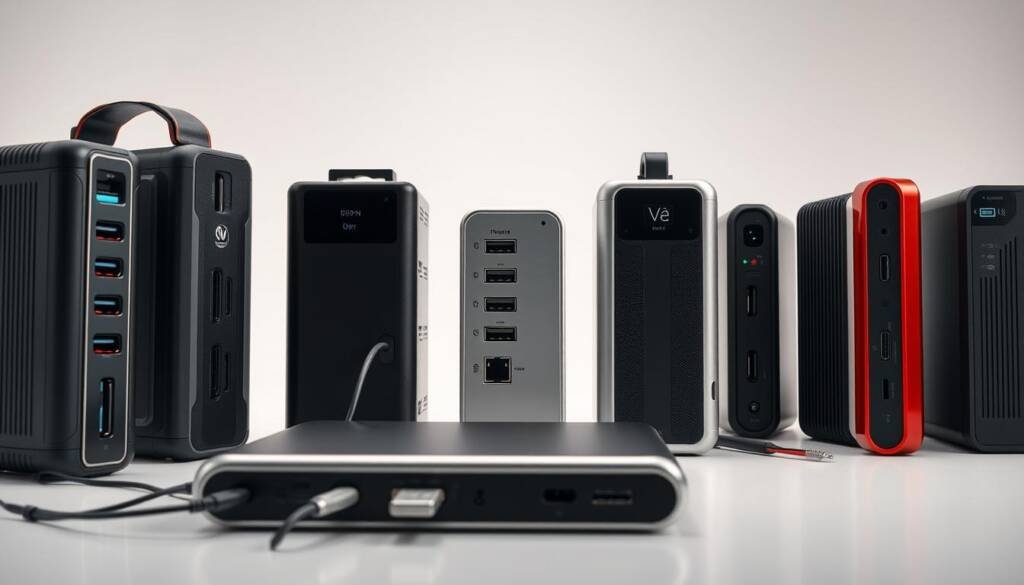Ever wondered why some portable power stations run out of juice too quickly while others seem to last forever? The answer lies in understanding capacity and how it aligns with your energy needs. Whether you’re planning a weekend camping trip or preparing for emergencies, selecting the right portable power station can make all the difference.
This guide dives into the essentials of calculating wattage, understanding watt-hours, and evaluating battery life. It also highlights the importance of sustainable energy solutions, ensuring your choice is both eco-friendly and efficient. With safety considerations and real-world scenarios, you’ll gain the knowledge to make an informed decision.
From lightweight options for short trips to heavy-duty models for extended use, this article covers it all. Learn how to match your energy requirements with the perfect power station, ensuring you never run out of power when you need it most.
Key Takeaways
- Understand wattage and watt-hours to match your energy needs.
- Opt for sustainable, eco-friendly solutions for long-term benefits.
- Consider safety features like overcharge and temperature control.
- Evaluate portability and additional features for convenience.
- Compare market options to find the best fit for your requirements.
Understanding Portable Power Stations
Portable power stations and generators serve similar purposes but operate in fundamentally different ways. While both provide energy, their mechanisms, applications, and benefits vary significantly. Understanding these differences helps you make an informed decision based on your specific needs.
Differences Between Power Stations and Generators
Generators produce energy on demand, often using gasoline or propane. They are ideal for heavy-duty applications, with wattage outputs ranging from 1,000W to 10,000W. However, they require regular maintenance and emit noise levels that can be disruptive.
In contrast, portable power stations store energy in batteries, making them quieter and emission-free. They typically offer wattage outputs between 100W and 1,000W, suitable for charging devices like phones, laptops, and small appliances. Their lightweight design enhances mobility, making them perfect for camping or emergencies.
Benefits of Mobile, Eco-Friendly Energy Solutions
Portable power stations shine in their eco-friendliness and low maintenance. Unlike generators, they produce zero emissions and operate silently. Many models integrate renewable features, such as solar charging, further reducing their environmental impact.
For example, the Bluetti AC200P offers a capacity of 2,000Wh, while the Anker Solix C1000 provides 1,056Wh, both with minimal ongoing costs. These stations are designed for convenience, often featuring multiple outlets and ports to charge several devices simultaneously.
Whether you’re powering essential appliances during an outage or enjoying outdoor adventures, portable power stations deliver reliable, sustainable energy without the hassle of traditional generators.
How to Choose the Right Capacity Portable Power Station for Your Needs
Selecting the perfect portable power station starts with understanding your energy needs. Whether you’re camping, working remotely, or preparing for emergencies, knowing your requirements ensures you pick the right model. This section breaks down the process into simple steps, helping you calculate wattage and watt-hour needs with ease.
Identifying Your Specific Power Requirements
Begin by listing all the devices you plan to power. Common examples include smartphones, laptops, mini-fridges, and LED lights. Each device has a specific wattage rating, which indicates how much energy it consumes. For instance, a smartphone typically uses 2-6W, while a mini-fridge may require 40-100W.
Once you’ve identified your devices, check their wattage ratings. Add these numbers to calculate your total energy consumption. This step ensures your portable power station can handle your needs without running out of juice.
Calculating Wattage and Watt-Hour Needs
Next, determine how long you’ll use each device. Multiply the wattage by the hours of use to find the total watt-hours required. For example, a 50W laptop used for 4 hours consumes 200 watt-hours. Add up these values for all devices to estimate your total energy needs.
Devices with motors or compressors, like mini-fridges, often have start-up surges. To account for this, add a 20% buffer to your total wattage. This ensures your power station can handle sudden spikes in energy demand.
Here’s a quick guide to common device wattages:
- Smartphone: 2-6W
- Laptop: 30-200W
- Mini Fridge: 40-100W
- LED Light: 10-30W
By following these steps, you’ll find a portable power station that matches your energy needs perfectly. Ready to assess your device usage? Let’s dive deeper in the next section.
Assessing Energy Needs and Device Usage

Determining your energy needs is the first step to finding the right portable power station. Whether you’re planning for outdoor adventures or preparing for emergencies, understanding your device usage ensures you select a model that meets your requirements. Start by listing all the appliances and devices you’ll need to power.
Listing Essential Appliances and Devices
Begin by creating an inventory of every device you plan to use. Common examples include smartphones, laptops, mini-fridges, and LED lights. Each item has a specific wattage rating, which indicates its energy consumption. For instance, a smartphone typically uses 2-6W, while a mini-fridge may require 40-100W.
Check the labels or manuals of your equipment to find their wattage ratings. Summing these values gives you the total energy needed. This step ensures your power station can handle your devices without running out of power.
Estimating Total Power Consumption
Next, calculate the total watt-hours required. Multiply each device’s wattage by the hours you’ll use it. For example, a 50W laptop used for 4 hours consumes 200 watt-hours. Add these values for all devices to estimate your total energy needs.
Devices with motors, like mini-fridges, often have start-up surges. To account for this, add a 20% buffer to your total wattage. This ensures your power station can handle sudden spikes in energy demand.
Here’s a quick guide to common device wattages:
- Smartphone: 2-6W
- Laptop: 30-200W
- Mini Fridge: 40-100W
- LED Light: 10-30W
By following these steps, you’ll find a portable power station that matches your energy needs perfectly. Ready to explore additional features? Let’s move to the next section.
Evaluating Key Features and Portability

When selecting a portable power station, understanding its technical specifications ensures it meets your energy demands. Key factors like battery capacity, output wattage, and additional features play a crucial role in determining its efficiency and suitability for your needs.
Battery Capacity and Output Wattage Considerations
Battery capacity, measured in watt-hours (Wh), defines how long a power station can run. For example, a 1000Wh battery can power a 100W device for 10 hours. Higher capacity units, like the EcoFlow DELTA 2, offer extended runtime but may be heavier.
Output wattage determines which devices you can power. A station with 500W output can handle laptops and lights but may struggle with high-demand appliances like microwaves. Always check your devices’ wattage requirements to ensure compatibility.
Exploring Additional Features like Solar Charging and Port Options
Many portable power stations now include solar panel compatibility, making them ideal for off-grid use. Models like the Jackery Explorer 1000 support solar charging, providing a sustainable energy solution for outdoor adventures.
Multiple port options enhance convenience. Look for units with AC outlets, USB-C ports, and DC carports. These features allow you to charge various devices simultaneously, from smartphones to mini-fridges.
For more insights on selecting the right unit for emergencies, check out this guide.
- Battery capacity impacts runtime and portability.
- Output wattage determines device compatibility.
- Solar charging offers eco-friendly energy solutions.
- Multiple port options ensure versatility.
Comparing Market Options and Consumer Reviews

Navigating the market for portable power stations can feel overwhelming, but focusing on key specs simplifies the process. With so many models available, understanding wattage output, battery capacity, and additional features helps narrow down the best options. Real-world performance and user feedback are equally important in making an informed decision.
Analyzing Specifications and Price Points
When comparing models, start with wattage output and battery capacity. For example, the EcoFlow Delta 2 Max offers 2048Wh, while the Anker PowerHouse 767 provides 2048Wh, expandable to 4096Wh. Higher capacity units like these are ideal for home emergencies or extended outdoor use.
Price points often reflect quality and longevity. The Bluetti AC70, priced just over $370, is a budget-friendly option with 768Wh capacity. On the other hand, fully kitted systems like the EcoFlow Delta 2 Max can exceed $5000 but offer unmatched performance and versatility.
Leveraging Expert Guides and User Feedback
Expert reviews and user feedback provide valuable insights into long-term reliability. For instance, the EcoFlow Delta Pro has been praised for its 3,600Wh capacity and ability to power a refrigerator for over 51 hours. Similarly, the Jackery Explorer 1000 V2 is lauded for its 1,000Wh storage and quick recharge time.
Warranty terms and customer service are also critical. Models like the BioLite BaseCharge 1500 offer 1,000 charge cycles, ensuring durability. Always check for upgrade options and ease of maintenance when selecting a power station.
For more details on innovative solar solutions for businesses, explore our comprehensive guide.
- Wattage output and battery capacity are key specs to compare.
- Price often reflects quality, with high-end models offering extended runtime.
- Expert reviews and user feedback highlight long-term performance.
- Warranty and customer service ensure peace of mind.
Conclusion
Selecting the ideal portable power station requires careful consideration of your specific energy needs. Start by calculating the total wattage and watt-hours required for your devices. This ensures the unit you choose can handle your usage without running out of power.
Next, evaluate key features like battery capacity, output wattage, and charging options. Models with solar compatibility, such as the Jackery Explorer 1000, offer sustainable solutions for outdoor adventures or emergencies. Portability and durability are also crucial factors to consider.
Finally, compare market options and read user reviews to find a reliable power station. Brands like EcoFlow, Bluetti, and Anker provide a range of models to suit different needs. By following these steps, you can confidently invest in a unit that meets your requirements.
For more insights on picking the perfect portable battery power station, explore this comprehensive guide. With the right information, you can enjoy dependable, eco-friendly energy wherever you go.